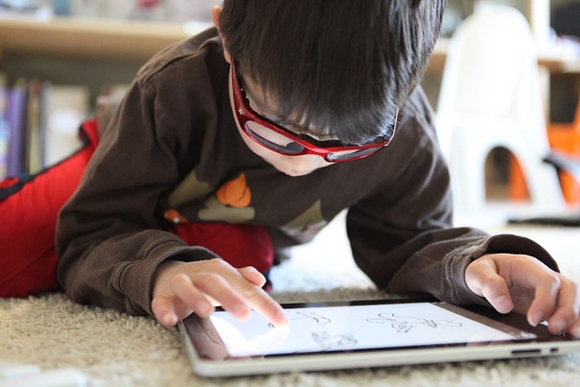

An optimist always thinks that change is for the better. In his book, The Rational Optimist, Matt Ridley describes the progress of human knowledge, a process of accelerating, spontaneous, change. Larger and larger human communities connect and exchange goods, information, and ideas. Only the best ideas survive. As these ideas accumulate, they become part of our collective intelligence. The result, in the last few hundred years, has been a dramatic improvement in living standards and a reduction in the number of hours of work necessary to acquire basic goods and services.
Education has been an exception. In the US, the cost of K-12 education, in constant dollars, has increased by 350% since the 1960s with no improvement in results.
The iPad , and the next generation of cheaper and better electronic tables that will follow it, are symbols of the dramatic change that is sweeping through the world of education.
How the iPad Will Change Education
1. Larger learning communities. The Internet is an almost limitless space for the creation of communities with common interests. Learners, teachers, schools and universities, and just plain entrepreneurs, are exchanging course content, ideas, learning systems, and other resources using a variety of media. A search for “French verbs” on google finds 653,000 pages.
2. Differentiation. The web is not only large, but it enables people of different cultures, with different perspectives, different skills, and different ideas, to interact. This creates a dynamic market place where people can learn from from each other and influence each other. This exchange of differences is at the core of the unplanned and spontaneous development that the world has experienced over thousands of years.
3. Accessibility. With handheld devices like the iPhone/iPad or Android, learning communities are more accessible. This will bring in more participants. People are now able to connect anytime and anywhere, while waiting for the doctor, reclining on a sofa, or lying in bed. Traditional concepts of time and space related to learning are being turned upside down.
4. Rich content. The distinctions between radio, TV, Internet, telephone, school, university, entertainment, education, are becoming blurred. Education is the acquisition of information, and the variety of ways in which information can be presented is constantly being expanded. All of this rich information content is accessible from an iPad. Entrepreneurs are creating applications for the iPhone and iPad, 1,000 two years ago, and 200,000 today, many of them of educational value. Only the best survive.
5. Cost and speed. India plans to produce a $35 iPad equivalent. In many countries, companies are competing to develop faster and more powerful processors and higher speed wireless connectivity. This will further accelerate the pace of interaction and change, and bring in more participants with more diverse perspectives.
6. Customization. All learning depends on the motivation of the learner. Our brains learn all the time, on their own timetable. Traditional learning has been top-down, one size fits all, seeking to impose a curriculum. The Roman school child had a wax tablet to write down the lessons dictated by the master. Nothing much changed for 2,000 years. Now with the iPad, the learner can be in control, choosing what to do, where, and when. The teacher’s role will increasingly be to coach, helping learners find what they need and what suits their interests.
Sugata Mitra, an Indian scientist and educator, has placed computers in remote villages and Indian slums and watched children learn without teachers, using the Internet. According to Sir Arthur Clarke, famous science fiction writer, “a teacher that can be replaced by a machine should be”. As Mitra said in concluding his inspiring TED lecture, education can be a self-organizing system. The iPad symbolizes how a bottom-up, spontaneous, self-organizing system of education will change how we learn, in the very near future.










